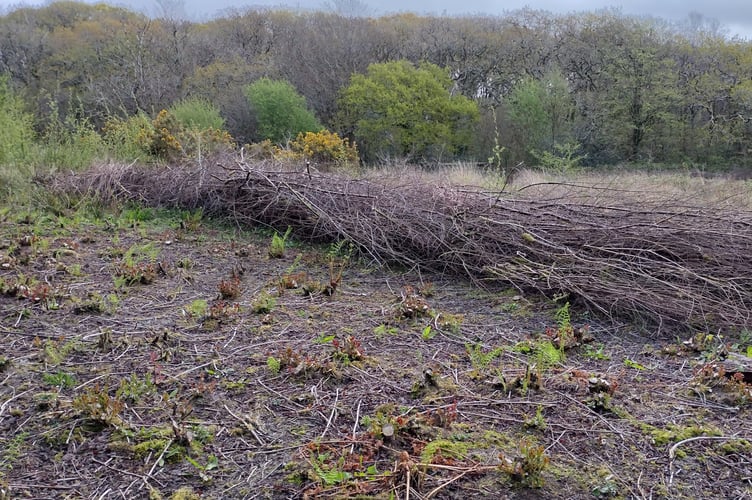Freezing cold mornings lugging loppers, bowsaws and other heavy kit through welly-sucking mud, followed by hours of cutting down willow and birch and stacking it into dead-hedges; then, lugging all the tools back to a distant car park. Why? What on earth would possess anyone to sign up for something that sounds like a cruel and unusual form of punishment?
I suspect that the number one reason for most of us involved in conservation volunteering is the sense of purpose, knowing that our small actions benefit biodiversity at the sites where we work. For me, number two has to be the camaraderie; the joy of being part of a tribe where we are all passionate about nature. Three, is the simple delight in just being outdoors, remembering the mantra that ‘There is no such thing as the wrong weather, just the wrong clothes’. And, if I’m honest, another reason I signed up is that my volunteer site lies just five minutes’ drive from my home: Andrew’s Wood Nature Reserve, Site of Special Scientific Interest (SSSI), owned and managed by Devon Wildlife Trust; a happy haven, right on my doorstep.
Oh, and I nearly forgot…biscuits! Biscuits, at tea-break and after lunch, supplied by DWT’s lovely Lineke. Lineke has the unenviable job of managing the volunteer team and keeping us fuelled and (mostly) cheerful.

Amongst our team we have specialists in moths, birds, insects and wildflowers; also folk with a long history of involvement at the site. This knowledge is invaluable, contributing observations on the effects of weather, climate change, human impacts, and grazing on the ecology of the site. Lineke listens to all of this input, balancing it with the key site objective of maintaining the nationally rare and important population of Heath Lobelia in a healthy state, along with all the other DWT targets for biodiversity.
Over this last winter, we focussed on cutting back scrub and saplings in areas which were previously open grassland, supporting many special species. Even mustering all the enthusiasm and energy in our little group of mainly retired volunteers, there was only so much we could do on such a large area so a group of contractors was brought in to wield brush-cutters and strimmers in the top two fields. This made a big difference however, one of the principles for encouraging wildflower biodiversity in conservation grassland is to remove as much of the cut material as possible. This not only prevents smothering but also reduces nutrients enriching the ground as the cut vegetation rots down. That might sound counterintuitive when we put a lot of effort into fertilising our garden flower beds but in nature, nutrient-enrichment allows competitive species like tussock and patch-forming grasses to get the upper hand, crowding out sensitive wildflower species which take longer and need more open space around them to establish. Heath Lobelia, in particular, has been seen to thrive after winter grazing has broken down the litter layer and exposed plenty of bare earth. Similarly, many species of orchid struggle when blanketed by thick vegetation so we were hopeful that our efforts might bear fruit for them too.

During our April volunteer session, we set to with rakes and pitchforks in the top field where the contractors had been busy. The recent dry spell meant that the cut material was nice and light for raking however, long fiercely-barbed bramble stems constantly snagged and had to be snipped away. Suddenly, a movement caught my eye, and I was thrilled to see my first lizard of the year: a fully grown one, about 15cm long, with distinctly olive-green coloration. Common, or viviparous, lizards are usually brown but colour variants do occur. This was the first green-hued one I had seen and, as it was still relatively cold and the lizard, a little sluggish, Phil, who was working nearby managed to see it too.

A little later, as we were working in a coppiced area in the next field, I spotted a characteristic pair of leaves. “Twayblade!” I called out. Lineke and several volunteers came over and together we counted over twenty of these distinctive green orchids, some already bearing a stubby flower stem in the cup of their twin leaves. I was particularly keen for Gordon Waterhouse to see them as he had put in a great deal of work in another part of the reserve where Twayblade had once been present. He was concerned as none had been seen there since volunteer work was interrupted by Covid restrictions and scrub growth left unchecked. A little later, Lineke and I walked up to that area and there too, we discovered many more of the paired leaves of these special orchids.
Birdsong, Bluebells, Ragged Robin and the golden flush of fresh oak foliage: a special time to visit this magical site.




